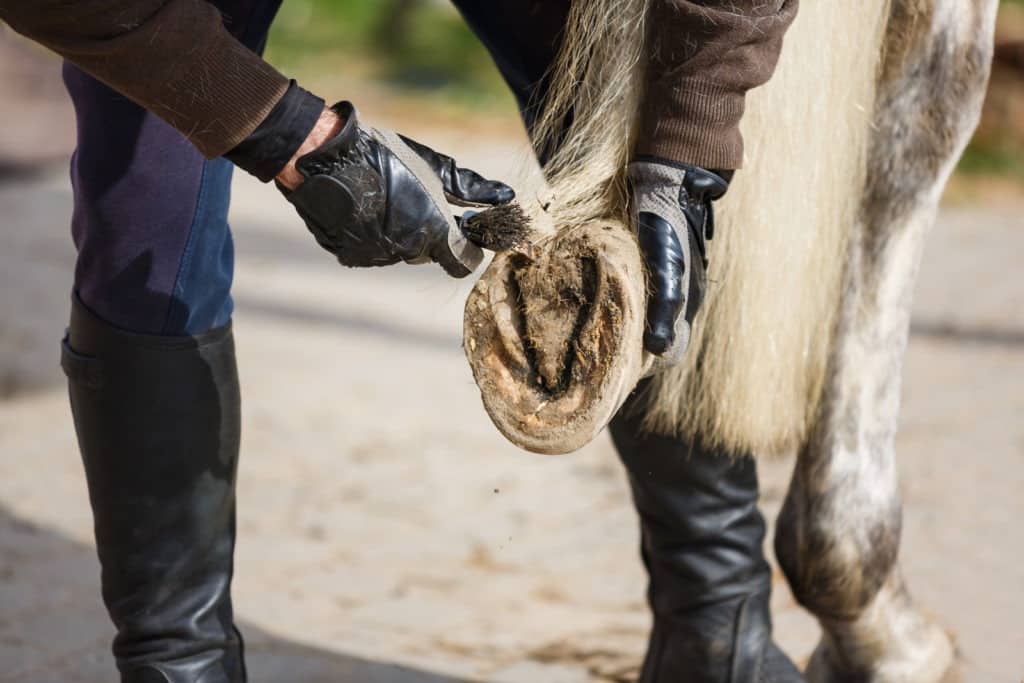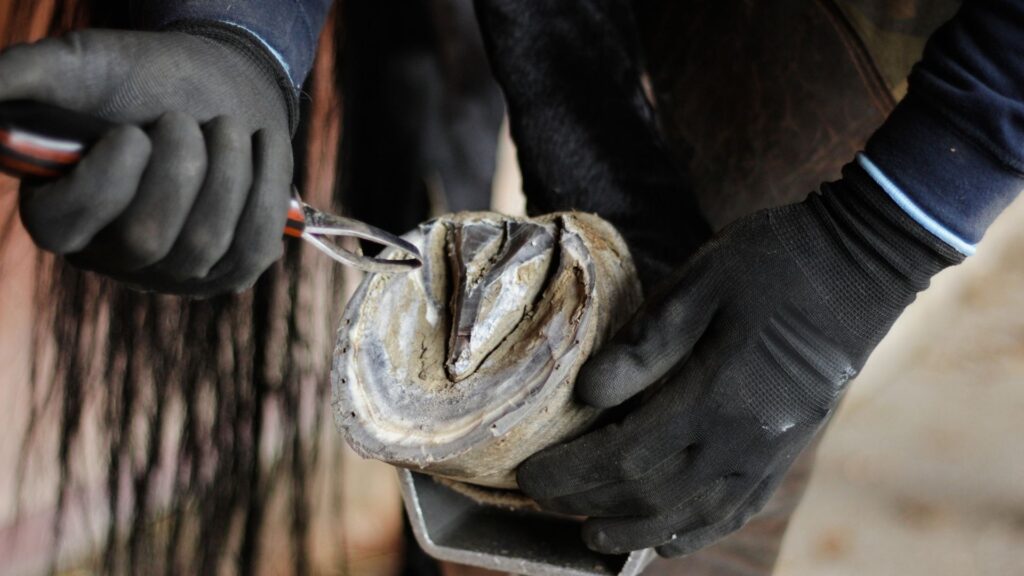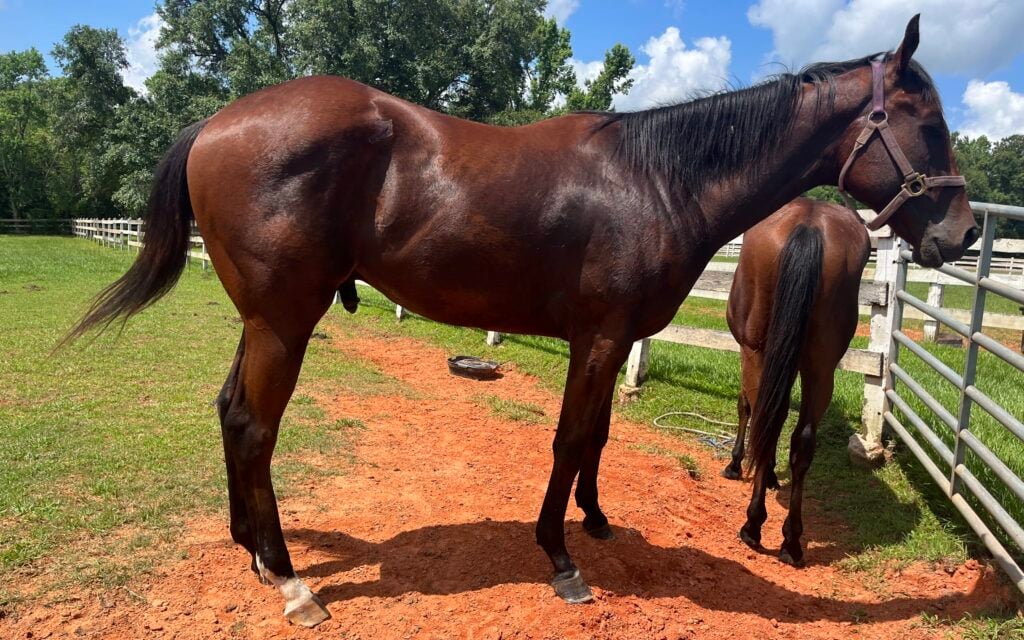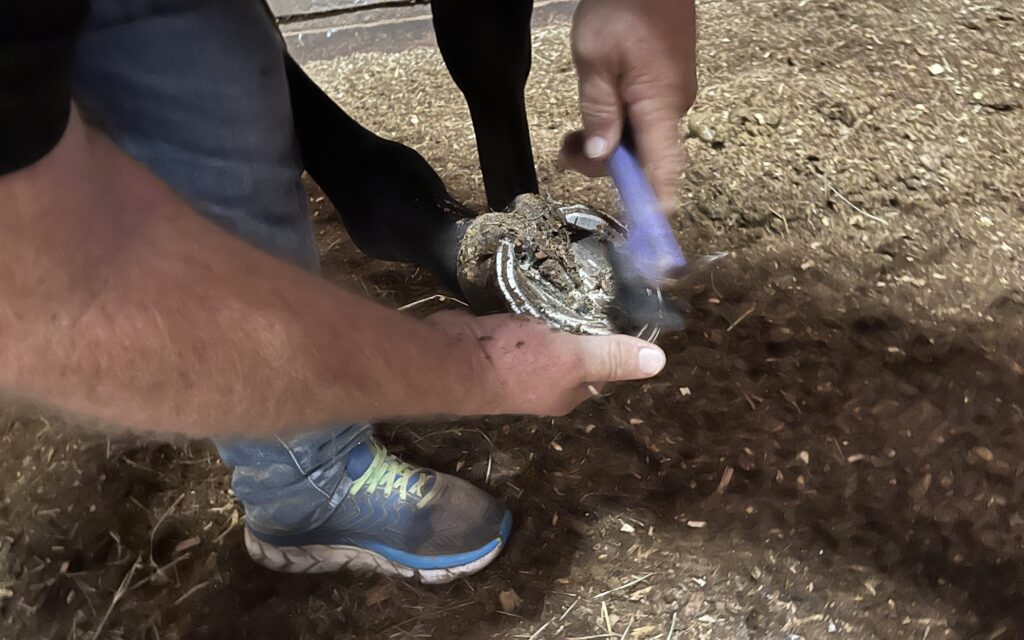Last updated: March 11, 2024
Thoroughbred horses, renowned for their speed and agility in the racing world, often come under scrutiny for their foot health. A common query among horse enthusiasts and potential owners is whether Thoroughbred horses inherently have bad feet.
This article explores the intricacies of Thoroughbred horses’ feet, shedding light on common issues, factors affecting their foot health, and how myths can be separated from facts.

Understanding Thoroughbred Horses’ Feet
Thoroughbred horses have feet that reflect generations of selective breeding focused on performance. Their hoof shape, size, and structure play pivotal roles in their agility and health. As a racehorse owner, I’ve seen firsthand how these unique characteristics necessitate specialized care.
Key Anatomical Traits:
- Hoof Shape and Size: Their elongated hooves contribute to their speed but may lead to issues like quarter cracks.
- Hoof Wall: Thinner and more pliable than other breeds, requiring vigilant maintenance to prevent damage.
- Sole Depth: Flatter soles demand careful management to avoid bruising and sensitivity.
- Frog and Digital Cushion: Essential for shock absorption, underscoring the importance of regular care.

Common Foot Issues in Thoroughbred Horses
Thoroughbreds face several foot challenges, including thin hoof walls, flat feet, quarter cracks, under-run heels, and navicular syndrome. Proactive management, including regular check-ups and skilled farriery, is crucial to mitigate these issues and maintain their performance and well-being.
Factors Influencing Foot Health
Foot health in Thoroughbreds is affected by genetics, care routines, nutrition, and the demands of training and racing. My experience underscores the importance of a holistic approach to care, emphasizing:
- Selective breeding for robust hoof genetics.
- Regular, professional hoof maintenance.
- A balanced diet rich in essential nutrients.
- Thoughtful training practices and environmental management.

Preventive Measures:
Proactive foot care is essential. I’ve found success with:
- Routine maintenance by a skilled farrier.
- Nutrition that supports hoof health.
- Tailored management practices, including appropriate bedding and therapeutic horseshoes.
- Vigilant monitoring for early signs of issues.

FAQs on Thoroughbred Horses’ Feet Health
Do Thoroughbreds inherently have bad feet?
While it’s a common belief, it’s not universally true. Foot health varies among individual Thoroughbreds, influenced by genetics, care, and environment. Proper management can lead to healthy, strong feet.
Are Thoroughbreds’ feet too thin to be durable?
Some Thoroughbreds may have thinner hoof walls, but this doesn’t necessarily mean they lack durability. With appropriate care and nutrition, their hoof integrity can be maintained or improved.
Can Thoroughbreds race without shoes?
The need for shoes depends on the horse’s hoof condition, training surfaces, and workload. Some may thrive barefoot with proper care, while others benefit from the protection shoes provide.
Are all Thoroughbreds prone to laminitis?
While Thoroughbreds can be susceptible to laminitis, it’s not inevitable. Managing risk factors through careful care and nutrition can significantly reduce the likelihood of this condition.
Are special supplements necessary to improve Thoroughbred hoof quality?
Nutritional supplements can support hoof health but should complement a holistic care approach, including balanced nutrition, regular hoof care, and appropriate management practices.
Below is YouTube video showing how to shoe a horse with thin soles and in severe pain.
Conclusion
Concluding our exploration into the foot health of Thoroughbred horses, it’s clear that while challenges exist, they are not insurmountable. The key lies in understanding the unique needs of the breed and implementing a comprehensive care strategy that addresses genetics, nutrition, environment, and the demands of training and racing.
By debunking common myths, we’ve shed light on the realities of Thoroughbred foot health, emphasizing the importance of informed, proactive care. As someone deeply invested in the well-being of Thoroughbred racehorses, I’ve witnessed firsthand the difference that dedicated care can make.
It’s a journey of continuous learning and adaptation, with each horse offering new insights into the complexities of equine health. Now, I invite you to share your stories, challenges, and successes in dealing with Thoroughbred horse feet in the comments below.
Together, we can build a richer understanding of Thoroughbred foot health and contribute to the well-being of these extraordinary athletes. Let’s continue the conversation and learn from each other, for the love of the race and the horses that make it so thrilling.
Thought-Provoking Questions for Readers:
- Genetic Diversity and Lifespan: How do genetics and breed-specific traits influence the lifespan of horses, and what role does selective breeding play in preserving the health and longevity of breeds like the Thoroughbred?
- Impact of Care and Environment: Considering the detailed care guidelines provided, what are the most critical aspects of horse care that significantly impact their lifespan, and how can owners ensure their horses live a long and healthy life?
- Cultural and Historical Significance: How has the Thoroughbred horse’s historical role in art, literature, and warfare contributed to its current status in equestrian culture, and what does this legacy mean for the breed’s future?
Resources
- Pour-In Pad Material: How to guide for using pour-in pad material.
- Thoroughbred Racehorse Foot: An in-depth look at foot problems associated with horse racing.
- Functional Anatomy of the Horse Foot: Study by the University of Missouri

About the Author: Miles Henry
Lifelong Horseman | Racehorse Owner | Published Author
Miles Henry brings over 25 years of hands-on experience training and owning Thoroughbred racehorses. Raised with Quarter Horses and Appaloosas, he’s spent a lifetime learning from horses—on the track, in the barn, and in the field. Today, he runs a small but successful racing stable in Louisiana and shares real-world insights on HorseRacingSense.com, helping horse owners, fans, and bettors navigate the sport with confidence.
📚 Books: View Miles’s books on Amazon »
🎧 Podcast Guest: Animal Tales Ep. 32 |
YouTube Interview
📩 Newsletter: Sign up for racing tips and horse care advice »
🔗 Follow Miles:
Twitter |
Facebook |
YouTube


